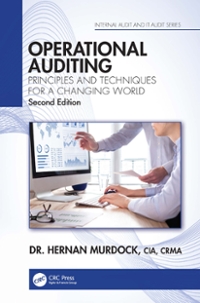Question
What Move Loot Learned the Hard Way about the Economics of a Business Move Loot was started by Jenny Morrill, Bill Bobbitt, Ryan Smith, and
What Move Loot Learned the Hard Way about the Economics of a Business
Move Loot was started by Jenny Morrill, Bill Bobbitt, Ryan Smith, and Shruti Shah. The founders participated in the prestigious Y Combinator Accelerator program in the Silicon Valley. The business idea was to make the process of buying or selling secondhand furniture seamless and fun. Instead of placing an ad on Craigslist and hoping that the person that buys your furniture can pay in cash and has a truck to take it away, Move Loots solution was to take the furniture off your hands, professionally photograph it, advertise it for sale, store it, and deliver it once the sale is complete. Move Loot would make money by taking a 50 percent commission on the sale. The secondhand furniture market in the United States is worth about $3 billion per year.
Move Loot launched in October 2013 and got off to a fast start. It started in San Francisco. Early on, Move Loot grew by more than 25 percent per week. Unfortunately, in mid-2016 Move Loot shut down. While the companys founders have not weighed in on why Move Loot failed, a look at the economics of the business provides clues as to potential trouble spots.
Move Loot had two revenue drivers a 50 percent commission on each item sold and a delivery charge for items under $500. On the expense side, Move Loot had to do sufficient marketing to get people to sell secondhand furniture through its service and to attract people to buy secondhand furniture through its service. Like all two-sided markets, the service wouldnt work unless there was a large enough critical mass on both sides of the equation. Once Move Loot got a client who wanted to sell a piece of secondhand furniture through its service, think of what it had to do to earn a commission.
Send a driver, a truck, and a crew to a customers house.
Pick up the piece of furniture and transport it to a storage facility.
Photograph the item, write a description, and list it for sale on its website.
Screen offers for the item. If a buyer didnt like the price, he or she could submit a lower bid.
Store the item until it sells.
Collect the money once it sells.
Deliver the item to the customers house.
Pay the original owner of the item.
Thats a lot of work to earn a commission on a secondhand piece of furniture. On top of that, if an item didnt sell, unlike a furniture store, Move Loot couldnt discount it until it sold the furniture belonged to the client. It gave the buyer 60 days for an item to sell. If it didnt sell the buyers could pay to get the furniture returned to them, donate it to charity, or request more time. Move Loot essentially had both high fixed costs and high variable costs. Its fixed costs consisted of its trucks, routing system, storage facilities, and equipment, such as the cameras needed to photograph the secondhand furniture and the servers to support its website. When it closed. It had expanded to several cities beyond San Francisco. Its variable costs consisted of truck drivers, dispatchers, the employees who moved the furniture, the storage facility employees, the employees who managed the sales, and the costs of running the storage facilities. All-in-all, this is a lot of overhead for what was essentially a secondhand online furniture store. Move Loot most likely was caught in a situation where it had narrow margins, high fixed costs, high variable costs, and some inventory that didnt move quickly. This is a hard combination to make work, the economics of the business just werent good.
In the months prior to closing, Move Loot iterated its business model more than once. In November 2015, it broadened its marketplace so that other stores, like a local antique shop, could post their items on Move Loots website. In March 2016, it switched to a model where anyone could upload their own photos to the site, and then Move Loot would take care on only the pick-up and delivery part. Neither these moves were able to save the company.
The Move Loot story is a good reminder that the fundamental economics of the business is an important part of a start-ups business plan.
Source: Adapted from Entrepreneurship Successfully Launching New Ventures, Pearson Education 2019.
QUESTION 1
Once a piece of secondhand furniture was listed on Move Loots website, if a customer didnt like the price, he or she could offer a lower amount. Move Loots 50 percent commission was based on the final selling price. This must have made it difficult for Move Loot to forecast both its gross margin and its contribution margin on individual sales.
a)In your opinion, do you believe this was a problem for Move Loot? (6 marks)
b)In your opinion, do you believe Move Loots business model was doable? (4 Marks)
c)In your judgement, were the economics of the business seem reasonable for Move Loot from the beginning? (2 Marks)
d)How could Move Loot establish its business in a manner that the economics of the business made more sense? (3 Marks)
e)What can all start-up founders learn from the Move Loot case? (5 Marks)
Step by Step Solution
There are 3 Steps involved in it
Step: 1

Get Instant Access to Expert-Tailored Solutions
See step-by-step solutions with expert insights and AI powered tools for academic success
Step: 2

Step: 3

Ace Your Homework with AI
Get the answers you need in no time with our AI-driven, step-by-step assistance
Get Started


